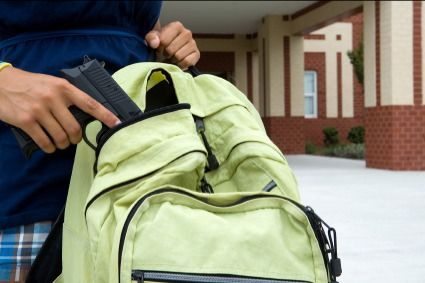School Violence: Early Warning Signs For Danger
Violence in schools seems to be on the rise, and to help combat the danger professionals are paying close attention to early warning signs—behavioral and emotional signals. The signs, while important indicators of potential trouble, do not always signal impending serious violence. Instead, the signs could point to a child in need of help. Either way, the gathering of this information could provide an otherwise overlooked opportunity to act on a child’s needs. However, in some instances, the early warning signs do point toward violence against others or to self.
It’s important that professionals act on the early signals appropriately, using them to help, not punish the child. Normally, children who are prone to this type of violence exhibit more than one sign. These behaviors also increase in intensity over time, escalating to an eventual act of violence. Therefore, it is important to look at the situation as a whole, and not immediately act on a child who displays only one sign.
There is no perfect “road map” or flashing neon sign that points to which child may soon commit an act of violence. But these signs certainly guide authorities in the right direction.
Early Warning Signs of Potential School Violence
1. A gradual withdrawal from friends and social contacts – an excellent indicator that the child may be feeling depressed or rejected.
2. A feeling of isolation – Children who are without friends tend to behave aggressively toward others.
3. Rejection – Children who feel rejected by family and friends sometimes have a tendency to hang out with new, aggressive friends. This behavior actually brings out aggressiveness in the rejected child, which could eventually lead to violent behavior.
4. Drug abuse (including alcohol) – A child’s self-control may disappear, or reduce, when using drugs, which could lead to an escalation in violent behavior that would have normally been held in check.
5. Bullied – Children who are bullied may eventually become violent, seeking revenge on those who’ve taunted them in the past.
6. Bully – A child, who himself is a bully may escalate into extremely violent behavior.
7. Anger – Uncontrollable fits of anger and rage are clear signs of a violent behavior.
8. Victim of violence. A child who’s been a victim of violence may have tendencies toward becoming violent. This includes violence to themselves.
9 . Gang involvement and other peer pressure – Children often do as they see others do.
10, Firearms and other weapons – Sometimes, children already prone to violent behavior have those feelings enhanced when they have access to firearms and other weapons.
Remember, it is a culmination of these signs that indicate the possibility of serious violence, not a single trait. However, intervention is the key. The goal should be to help the child before things reach the tipping point. Negative emotions should be addressed as soon as they are recognized. The child needs support from everyone—school officials and family members.
Each school system should have a plan in place that deals with both intervention and the proper responses. And that plan should include getting the parents involved as soon as possible.
* * *
Have you reserved your spot for the 2011 Writers’ Police Academy?
Ride-a-longs with sheriff’s deputies, jail tours, firearms and driver training are only a part of the fun!
Train with the pros.
Sign up now at:
http://www.writerspoliceacademy.com/







Very important topic. Schools in our area now do drills to try and prepare for a sudden violent outburst and it worries me to see them trying to routinize a response, when in a real world situation what works one time seldom would another. An emphasis on prevention as your post facilitates would be much better, in my opinion.